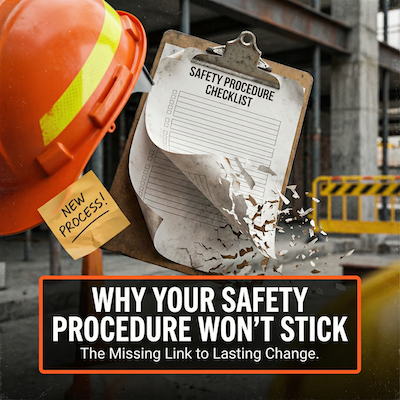Leadership plays a critical role in shaping an organization's safety culture and performance outcomes. In high-risk industries like construction, mining, and logistics, effective leadership is especially important for reducing injuries and fatalities. Some leaders seem to exert an almost magical influence on followers, inspiring devotion through sheer charisma and force of personality. But does this "cult of personality" actually translate into better safety?
Charisma, the double-edged sword
Research suggests charismatic leaders can positively impact safety, but they also have limitations. A 2015 study by Li et al. examined charismatic leadership among coal mine managers in China. They found that charismatic leaders reduced unsafe behaviors by positively influencing workers' safety attitudes. The researchers attributed this to charismatics' ability to communicate an inspiring vision and lead by example.
Transformational leaders tend to foster organizational commitment and convey a sense of mission.
However, an extensive literature review by Clarke (2013) found that while charismatic leadership overlaps with transformational leadership, it is ultimately less effective. Transformational leaders tend to foster organizational commitment and convey a sense of mission. This motivates employees to look beyond self-interest and engage in "safety citizenship behaviors." Charismatics rely more heavily on personal magnetism, which may not inspire lasting change.
A little more charisma, a little less narcissism

Additionally, charismatic leaders are often narcissists at heart, exhibiting many of the same qualities. Narcissists tend to be self-focused, distrustful of others, and poor listeners - not ideal for leading major safety initiatives. Their need for adulation also makes them prone to risk-taking and surrounding themselves with compliant "yes men" (Maccoby, 2004).
Balancing Charisma with Systems for Long-Lasting Safety
Although charisma can spark initial enthusiasm and draw attention to safety measures, it cannot sustain them. For a more lasting impact, organizations should adopt a balanced approach. Transformational leadership, which fosters a collectivist, mission-driven mindset, seems more equipped for the long haul. Transformational leaders engage employees in decision-making, value critical feedback, and act as ethical role models. They help align organizational values with a higher purpose, motivating teams to prioritize safety genuinely.
But leadership style alone won't cut it. It's crucial to back charismatic or transformational leadership with strong systems and policies. For example, technologies like Scratchie offer a systematic approach to safety by allowing supervisors to instantly reward safe behaviors. This kind of positive reinforcement can amplify the best aspects of both charismatic and transformational leadership, offering a comprehensive strategy to improve safety culture.
Becoming a Better Safety Leader
Leaders looking to enhance their safety culture should focus on positively reinforcing safe behaviors, rather than just punishing unsafe ones. The Scratchie app provides an excellent tool for this.
Scratchie allows leaders to immediately reward safe actions through digital “scratchies” - lottery tickets employees can scratch to win small prizes. When you observe an employee properly using protective equipment, reporting a hazard, or exhibiting any other desired safety behavior, you can send them a Scratchie via the app.
This reinforces safety top-of-mind, helps shape positive habits, and makes safety engaging. The small chance of winning a prize taps into our innate love of gambling and games. Mystery scratchies provide anticipation, accomplishment, and fun.

With Scratchie’s analytics, you can also track trends and see which behaviors are improving. This allows you to target areas needing more focus.
Simple, positive reinforcement is powerful. Scratchie makes it easy to reward safety in the moment. No more waiting for end-of-month bonuses or awards.
Integrating Scratchie into your everyday leadership practices will help shift perspectives from safety as a rule-based necessity to safety as a core value. With an enthusiastic, participatory culture, you’ll be on your way to transformational safety leadership.










.svg)
